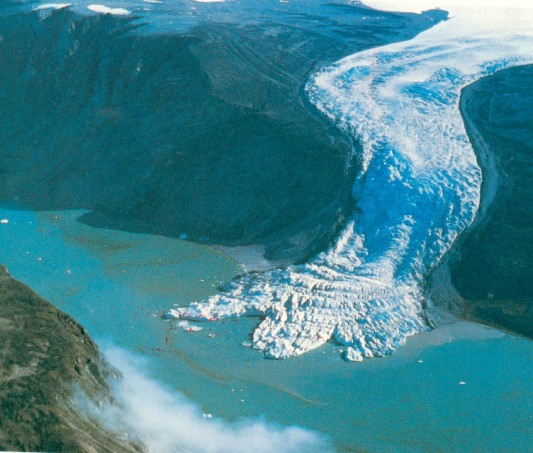Glaciers
Glaciers are found at present in the regions around the North and South poles and in mountainous areas elsewhere. Near the equator in South America and Kenya in Africa, some of the mountains are about 4, 500 meters which is about 15, 000 feet. It is high enough for the average air temperature to be well below freezing point. Thus, there are glaciers in equatorial lands as well as in polar ones. Of course, for glaciers to form at all, snow must fall A few places in Antarctica have no glaciers simply because very little snow falls.
Ablation
As the ice in the glacier flows downhill to warmer altitudes the amount of melting increases. Some of the melt water may soak into the glacier and refreeze. The rest either flows of the glacier in streams or evaporates into the air. These processes, by which ice is lost from the glacier, are called ablation. Some glaciers reach the sea and melt when they come in contact with the warmer seawater. Calving, the name used when larger icebergs break off a glacier and float away, is also a form of ablation.

Accumulation
Let’s take a glance at a glacier in a mountainous area High up in the mountains, the amount of new snow and ice added each year is greater than the amount lost by melting and evaporation. This upper part of the glacier is called the accumulation area. Farther down the mountain, ablation is greater than accumulation of snow. This part of the glacier is the ablation area. At some level on the glacier, summer melting just balances the winter;s accumulation of snow. This level is called the firn line. Above the firn line, the glaciers surface is permanently snow-covered. Below it the surface is ice in the summer and snow in the winter.
Watch this fascinating video of a glacier wave below!
